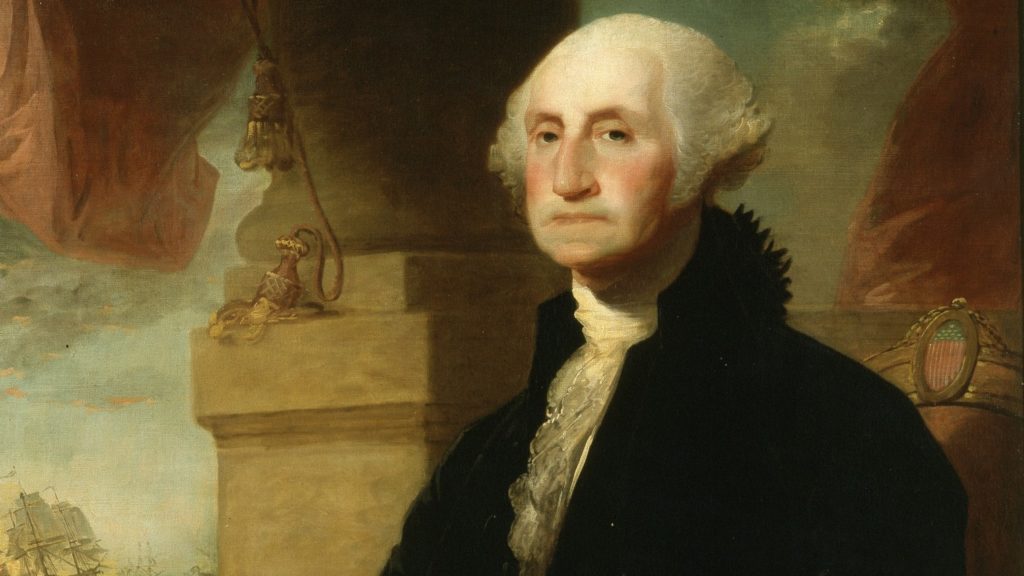Last updated on October 26th, 2022 at 09:03 pm
The powdered wig was one of the most well-known and often lampooned features of 18th-century fashion. But how did this style come to be? And why did people wear them?
Men in 16th century England wore the first wigs to cover up baldness. Wigs became increasingly popular in the 17th century, and by the 18th century, men and women of all social classes wore them.
Wigs were often made from human hair but were also made from wool, horsehair, or even goat hair.
People used powder to style wigs and give them a more polished look. It was also used to cover up the smell of hair grease and keep the wigs from getting too sweaty in the hot summer months.

Why Wigs?
So why did people wear powdered wigs? For many, it was simply a matter of fashion.
People at the time saw a prominent hairline as a sign of youth and beauty, so those who were starting to lose their hair (or who wanted to look younger) would powder their wigs to give the illusion of a fuller head of hair.
For others, powdered wigs were a way to show their status and wealth.
Wigs could be pretty expensive, and the more elaborate the wig, the higher position it conveyed.
Wigs were often decorated with jewels and feathers and could be quite large and cumbersome to wear.
Powdered wigs fell out of fashion in the late 18th century when more uncomplicated and natural hairstyles became popular. But they have left us a fascinating glimpse into the styles of a bygone era.
Who Wore Powdered Wigs?
Men and women of all social classes wore powdered wigs in the 18th century. They were trendy among the aristocracy and the upper class as the cost of powdered wigs was costly.
Powdered wigs were often worn by those in public positions, such as judges, lawyers, and politicians. This was because wigs were seen as a sign of authority and power.
How Were Powdered Wigs Made?
Powdered wigs were often made from human hair but could also be made from wool, horsehair, or even goat hair. The hair would first be cleaned and then powdered with a substance called “starch powder.”
This powder would help keep the wig in place and give it a more polished look.
The starch powder was also used to cover up the smell of hair grease and to keep the wigs from getting too sweaty in the hot summer months.
How Were Powdered Wigs Worn?
People wore powdered wigs with a hat or cap. They could also be worn with a headband or ribbon. The wigs were often tied in a bow at the back of the head.
Powdered wigs could be quite large and cumbersome to wear. They were often decorated with jewels and feathers. Powdered wigs also had to be re-powdered every few days.
Why Did Powdered Wigs Fall Out of Fashion?
Powdered wigs fell out of fashion in the late 18th century for many reasons.
Firstly, they were seen as too formal for everyday wear. In addition, the powder was often seen as unhealthy, as it could be dusty and cause respiratory problems. Lastly, powdered wigs were not practical.
They could be costly to maintain and were often quite cumbersome to wear.
Powdered wigs began to fall out of fashion in the early 19th century as more straightforward and natural hairstyles became popular.
This trend was partly due to the French Revolution, when powdered wigs were associated with the aristocracy and thus became unpopular.
By the mid-19th century, powdered wigs had fallen completely out of fashion and were only worn on rare occasions, such as at costume parties or by those in the theatrical profession.
Are Powdered Wigs Still Worn Today?
Powdered wigs are rarely worn today except on rare occasions, such as at costume parties or by those in the theatrical profession.
They are also sometimes worn by judges in court. However, powdered wigs are no longer seen as a sign of power and authority and are now mostly considered a bit of a joke.
Famous People Who Wore Powdered Wigs
Many famous people wore powdered wigs in the 18th century, including:
French Queen Marie Antoinette
Marie Antoinette was known to wear powdered wigs daily. She is often credited with popularizing fashion among the aristocracy.
George Washington, the first President of the United States
George Washington was often depicted in portraits wearing a powdered wig. However, it is unclear how often he wore one in real life.
Benjamin Franklin, American Founding Father
The American inventor and founding father Benjamin Franklin was often wearing powdered wigs. He even wrote a satirical essay about this fashion in 1784.
King Louis XVI of France
King Louis XVI of France was another famous powdered wig wearer. He was often seen wearing an elaborate wig, even on formal occasions.
Powdered wigs offer us a glimpse into the fashion of the past. They were once a common sight but are now mostly only worn on rare occasions. They’re a reminder of a time when simplicity was not in fashion and people took great pride in their appearance.


According to the notes in the “Diary of a Country Parson”, written by Parson Woodforde in that period, wigs fell out of favour in England during the Napoleonic war, when Pitt put a tax on hair powder. This caused “a revolution in fashion”. Woodforde records how one of his neighbours “began to wear his own hair”.